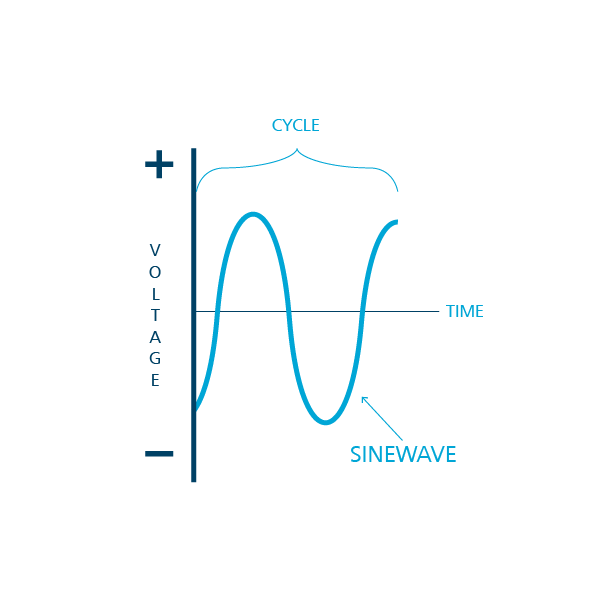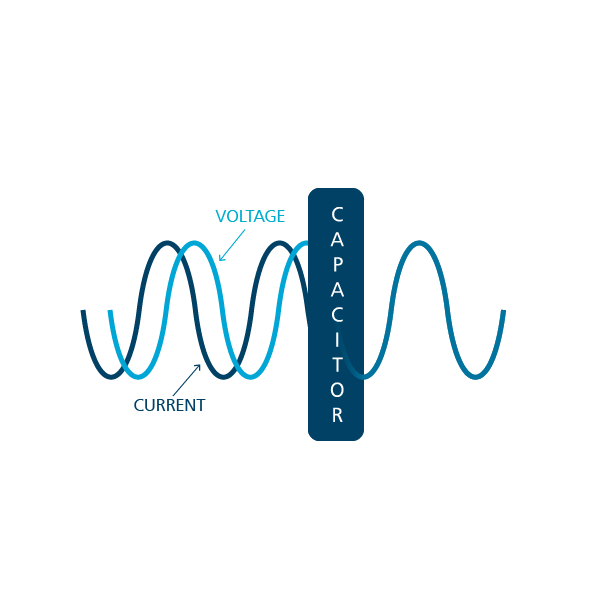There are two basic types of electrical supply, which we also meet in everyday life: alternating voltage/current supply (AC) and direct voltage/current supply (DC). In this ABC article, we’ll tell you the two reasons why our AC networks need capacitors.
The difference between AC and DC
AC supply has an alternating character, which means that the polarity of voltage and the direction of the current flow constantly changes. When generators produce energy, they rotate from plus to minus, giving an alternating voltage/current. DC voltage, in turn, is direct and is fixed by the voltage source. Batteries are a simple example of DC power supply.


The most common electrical voltage we come into contact with is AC and it is also what we get from the plugs in our walls. DC is for special purposes, e.g. for high-voltage transmission lines. The AC in wall plugs have a frequency of either 50 or 60 Hertz, which means that they complete a voltage cycle from plus to minus to plus again 50 or 60 times in a second.

Capacitor task 1: Shifting back load
The available voltage and current supplied to an electric motor should ideally move in the same cycle, meaning that they are synchronized and follow the same sine wave. Then the active power (i.e. the power, which is actually utilized) is as big as possible and there are minimal losses. In reality, however, the network is not ideal. There is inductive load, i.e. devices that bring shifts in sine waves and mess with the network. If you connect an electric motor to a network, the synchronization of the voltage and current will be disturbed. This means that part of the energy is wasted.

When the inductive load shifts away the synchronization between the voltage and the current, we can use a capacitor to shift it back. This is called power factor correction, and it is done to compensate the power we loose when introducing inductive load in the AC network. We want as much energy as possible to be effective in the network. This is a traditional and important application area for capacitors in AC networks.
Capacitor task 2: Filtering noise
Another task of capacitors in electrical networks is filtering. The frequency of the normal network is 50 or 60 hertz and we want to keep the voltage/current as clean and smooth as possible. In the network, however, there are units which disturb this ideal condition, so-called electrical noise. The ideal sine wave is neither spiky (from disturbances of higher hertz) nor wavy (from disturbances with lower hertz).

Electrical noise causes, for example, the overheating of devices. At home, you can hear or see it when you, for instance, plug in a vacuum cleaner and the radio makes a noise or the lights flicker. This happens also in bigger industrial devices, where it causes even more of a disturbance. It is the task of capacitors to filter out these disturbances.
So, to summarize:
AC networks can be disturbed in several ways from connected devices, which cause a shift between the current and the voltage in the network or cause deformations in the sine wave. The job of capacitors is to synchronize the voltage and the current and filter out the noise, so that we get as much effective power as possible from the network.